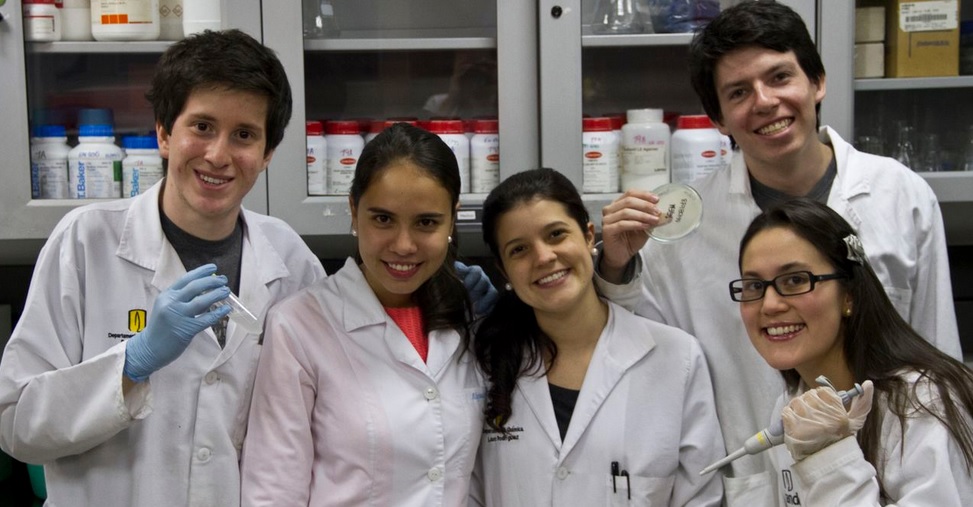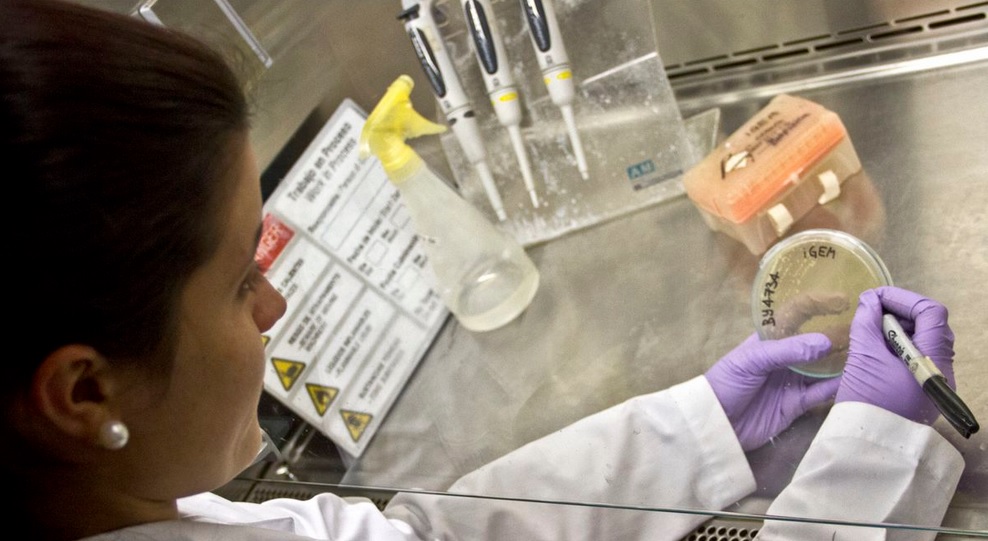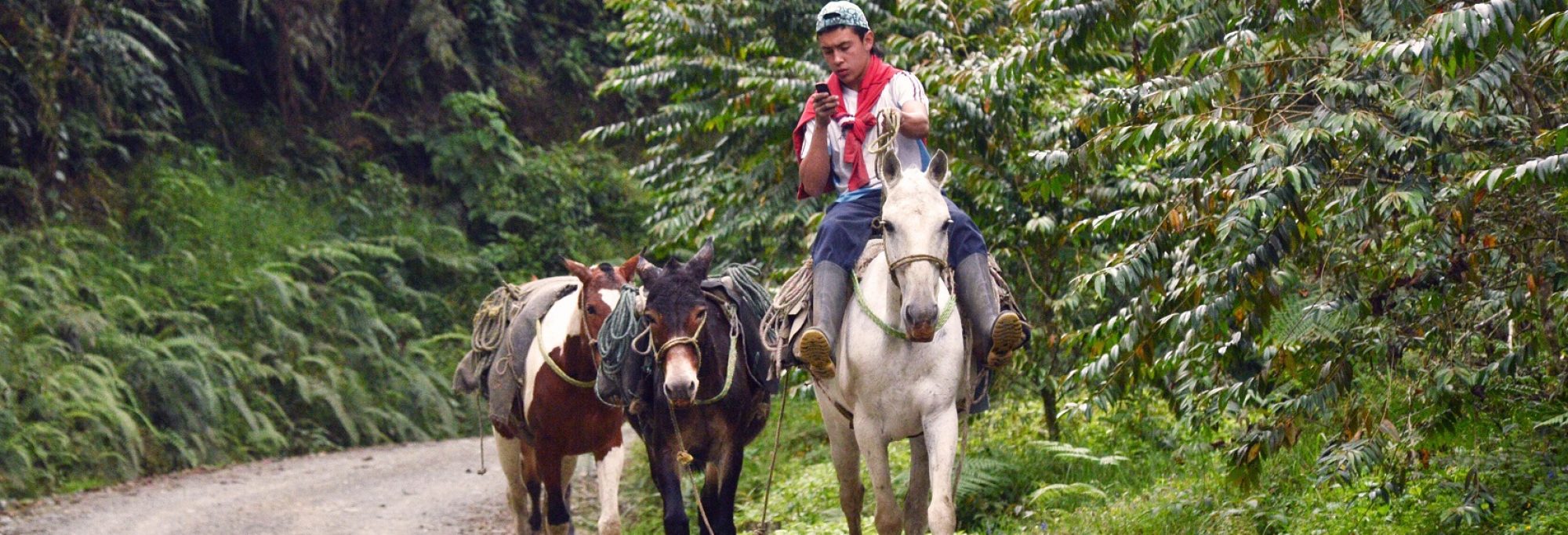 |
Since 2006, Latin American students have been designing biological machines with specific missions: to remove nickel from contaminated drinking water in Colombia; to sense and respond to arsenic in Argentina; and to target and destroy cancer tumors in Mexico.
These projects are university submissions to the International Genetically Engineered Machine competition, iGEM, started in 2003 to engage students and entrepreneurs worldwide in the design and construction of organisms capable of performing defined tasks using a Registry of Standard Biological Parts consisting of genes and other snippets of DNA—essentially genetic Lego bricks. These genetic elements interact within biological systems, usually microbial cells, to produce a defined output: the metabolism of a hazardous compound, the emission of light in the presence of heavy metals, or the identification and destruction of tumorous tissue.
In that sense, one of the aims of iGEM is to bring predictable engineering capabilities to otherwise uncontrollable biological systems; in other words, to encourage competitors to apply concepts usually associated with traditional computing to synthetic biological machines.
Three years before James Watson and Francis Crick published the first correct molecular model for DNA, Alan Turing, one of the world’s very first computer scientists, put forward the question: “can machines think?” conceiving the thinking process as a collection of simple steps, and a “thought” as the result of properly following them. What Turing’s question envisioned was computer software: a set of instructions that a computer follows to process external stimuli and generate a result. In the realm of biology today, computers and computer software allow us to synthesize DNA in the absence of living organisms, and assist us in building them in a way that resembles the way we build machines.
“Our team is working on bacteria capable of detecting, absorbing, and removing nickel from water through magnetism,” explains Laura Rodríguez, an undergraduate student at Universidad de los Andes, Bogotá, and iGEM Colombia team member. “We’re taking science out of the laboratory and making it available to everybody to make a better world,” she says.
The iGEM-Colombia project may, at the same time, present a solution to a current environmental problem in the country. “The idea for removing nickel is a response to issues associated with the Cerro Matoso mine where surrounding communities are experiencing health problems,” says Juan Manuel Pedraza, a biophysics researcher at the university and advisor to the iGEM Colombia team. Research ideas targeting local issues, Pedraza adds, are usually the most popular.
Meanwhile, a Mexican iGEM team working at the Instituto Tecnológico Monterrey has devised a medical application for bacteria: the delivery of therapeutic proteins that target and kill cancerous cells in tumors. This project won first place in the Latin America regional iGEM competition judged last weekend at the Universidad Mayor de Chile. The team now heads to the world championship at the Massachusetts Institute of Technology in the United States, in November.
 |
Preventing and treating cancer in Latin America: applied biodiversity?
The iGEM competition is bolstering interest in synthetic biology across the continent and draws on an appreciation for the region’s natural wealth as a source of inspiration. Six out of the seventeen most biodiverse countries of the world are located in Latin America: Brazil, Colombia, Ecuador, Mexico, Perú and Venezuela.
“This unique biodiversity is one of the main reasons to promote synthetic biology”, reflects Pedraza, iGEM Colombia’s advisor. “If we could give a practical value to our genetic wealth we would motivate its conservation.” And the prevention and treatment of disease may be one way to grant practical value to Latin America’s nature.
The effects of mining on human health constitute a salient issue in Colombia. In Ecuador, cancer rates spike near oil fields. In Brazil, some of the pesticides used in plantations that replace the Amazonian forest are known carcinogens. Thus, removing contaminants and destroying tumors using engineered microorganisms may offer a way to reconcile industry and conservation in the continent encouraging the preservation of nature as a source of future discoveries while developing the tools to apply them using synthetic biology.
 |
In 2011, for example, an organism capable of fully degrading plastic in the absence of oxygen was discovered in Ecuador’s Amazon. If this organism could colonize a urban landfill, would we witness the end of plastic contamination? Also, 60% of successfully developed drugs have a natural origin, yet only 10% of the approximately 250,000 to 750,000 species of higher plants have been screened for bioactive compounds. Could we use synthetic biology to produce any particular compound using microbes? The answer is yes. In fact, Sanofi, a French pharmaceutical company, uses yeast strains engineered by Amyris, a synthetic biology company from the United States, to produce the precursors of the life-saving antimalarial drug artemisinin.
Furthermore, as we enter a period of ambitious intellectual development aimed at decoding and applying biological software, we face a challenge similar to that of early computer engineers: to decipher and apply the molecular language of life which is encrypted at least at two levels: at the level of nucleotide sequences, which we can easily access and somewhat understand, and at the level of spatial relationships dictated by the chemical properties of any particular sequence, its products and its context.
More than half a century after Turing’s question, “can machine think?”, the Computer History Museum in Mountain View, California displays a neat collection of “thinking” machines illustrating their own evolution in our hands. If you visit the museum you find a section devoted to “higher level languages” where a sign reads:
“As computers grew more affordable, programming costs began to overshadow hardware costs. The development of higher-level, more user-friendly programming languages made writing large programs easier. But the cost of creating software was, and is, huge.”
These perspectives are very relevant today as we build biological machines that follow a defined set of rules to produce an output. And whether that output is a molecule of commercial interest, or a thought, the logic and processes behind it bring forward fascinating questions to consider.
Credit photos: Laura Rodriguez, iGEM.
Additional reporting from Aleszu Bajak.

Comments are closed.